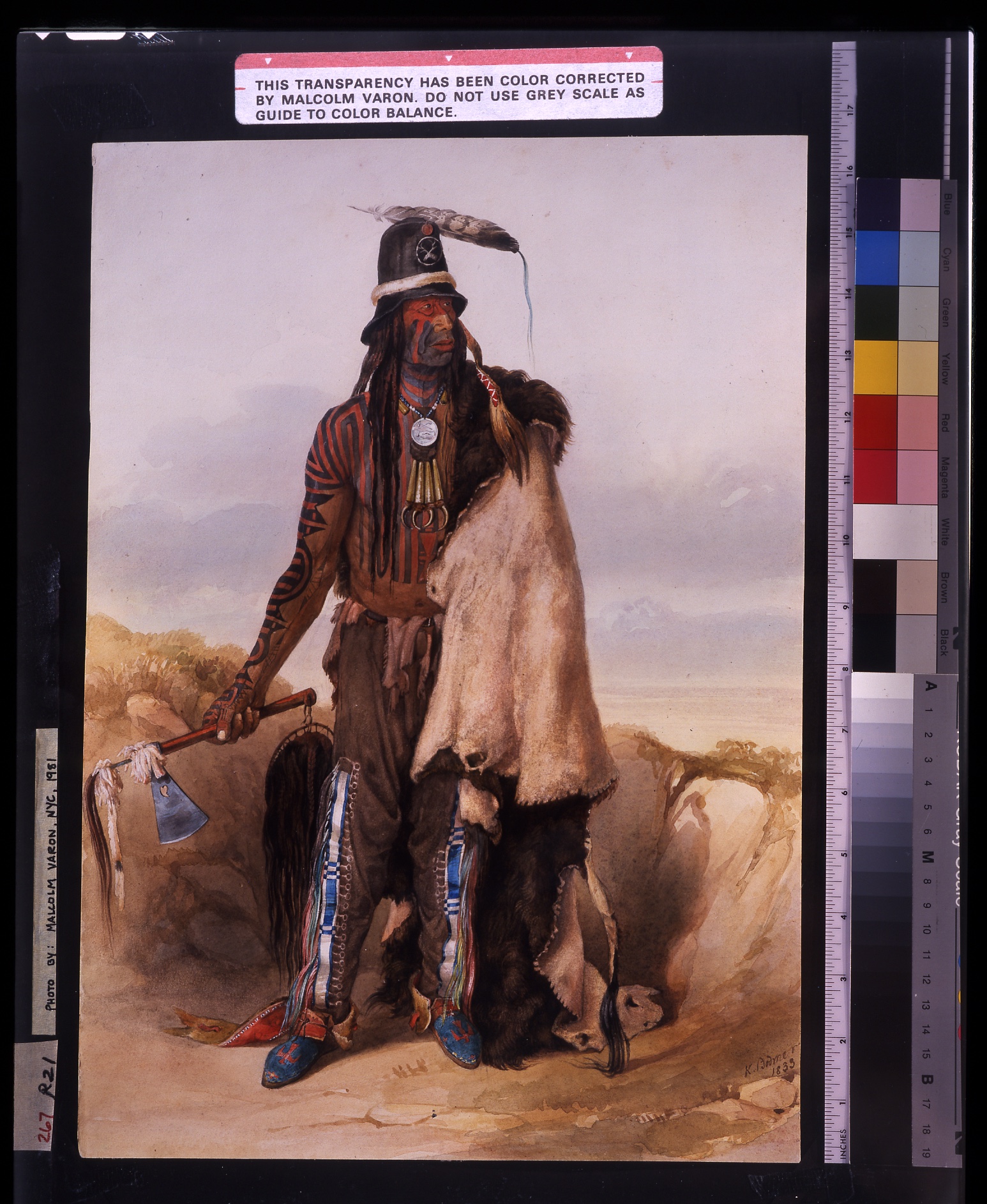Addíh-Hiddísch, Hidatsa Chief

Description
Addíh-Hiddísch ("Maker of Roads") was a chief of the village of Awacháwi and a member of the tribal council which was concerned with the mutual defense of all three Hidatsa villages. He was the keeper of an important medicine bundle and had an impressive war record, having gone after the enemy six times on successful raids without losing any of his own men. Bodmer painted him in March of 1834. A hundred years later, Addíh-Hiddísch was still remembered by the Hidatsa as an outstanding leader. Tattooing was not uncommon among Mandan and Hidatsa men, but was usually limited to the right breast and arm. Addíh-Hiddísch, however, was extensively tattooed on his breast, arms, hands, and legs. The tattooing was done with a needle dipped in a blue-black dye made with willow bark. The stripes and symbols, which may represent war exploits, have been embellished with red paint. Addíh-Hiddísch wears a European hat topped with a coup feather, and a peace medal as a sign of his political status. His leggings are trimmed with blue and white beadwork; the knoblike painted symbols may stand for the many horses he captured and gave away as presents. The Thunderbird once appeared to him in a vision, promising battle success; note the bird design on his quilled moccasins. The scalp and scalp lock attached to his war hatchet are among several such trophies taken by him and his followers. Addíh-Hiddísch was pictured in the same clothing and pose in Tableau 24 of the aquatints, although the caption in the 1906 Thwaites edition of Maximilian's narrative incorrectly identifies him as Mandan.
Medium
watercolor on paper
Dimensions
16 1/2 x 11 5/8
Call No.
JAM.1986.49.388
Approximate Date of Creation
March 1834


